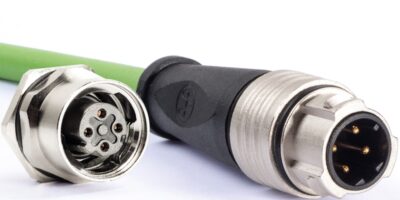M12 push-pull design is first M12 connector defined for IEC 61076-2-012
Claimed to be the first M12 push-pull design, which has been defined as an international standard (IEC 61076-2-012), the push-pull version of the M12 connector with inner locking negates the need for proprietary solutions for M12 push-pull systems says Yamaichi Electronics.
The company claims to have always set the standard with the M12 push-pull connector with inner locking. The cable-side connector engages deep into the device socket from the inside with locking hooks so the push-pull system requires only the same installation space as a common M12 connection with screw locking.
With this technology, it is possible to completely insert the M12 socket into the device, e.g. to integrate it into a distribution box, aligned flush with its housing. The system is IP65 / IP67 water- and dustproof and uses independent sealing concepts for screw-type and push-pull connector for a reliable mixed use of connectors.
The particularly long locking hooks of the cable connector are supported by the threaded segments of the device socket. This makes the system extremely robust from a mechanical perspective, says Yamaichi. In addition, it offers significant advantages when subjected to torsional loads and rotational forces. Yamaichi says this brings all the benefits of the push-pull locking system (time savings, miniaturisation, blind and tool-free contact mating with simple handling) all in accordance with the standardised M12 specification.
The wall-mount socket can still be mated with conventional M12 connectors with screw locking. This means that users are not necessarily dependent on a special cable connector and thus remain flexible, Yamaichi explains.
Yamaichi Electronics specialises in test and burn-in sockets, connectors and connection systems. Their reliability and functional dependability are essential for the success of the overall project. Yamaichi Electronics manufactures reliable components for demanding applications in various markets and applications: semiconductor, industrial automation, automotive, data networking, measurement and testing, medical, mobile computing and embedded computing.




